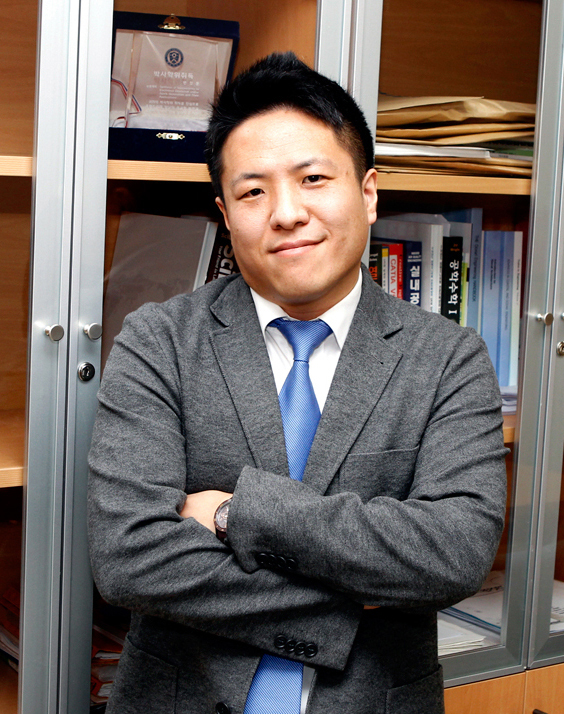Professor Byeon Jung-hoon Develops New Welding Technology to Protect Health N
No.88757- Writer yu
- Date : 2015.03.25 09:24
- Views : 8577
Expected to resolve 'health risk' issue resulting from fine particles while welding
Pursuing commercialization research with medical school in order to improve work environment and worker health
Published in latest issue of world's most authoritative academic journal in the civil engineering and environment sector
[2015-3-19]
Pursuing commercialization research with medical school in order to improve work environment and worker health
Published in latest issue of world's most authoritative academic journal in the civil engineering and environment sector
[2015-3-19]

Department of Mechanical Engineering Byeon Jung-hoon (36) developed a new technology that can greatly reduce the toxicity of fine particles that occur during welding.
This study, which was an international collaborative research together with Professor Jeffrey Roberts of Purdue University, Thomas Peters of the University of Iowa, and Dr. Park Jae-hong, was very meaningful in that it could reduce bodily harms of welding work, which is used widely in most heavy industries including ships and automobiles, as well as in mechanical industry sectors and small-scale construction sites.
As it recently became known that fine particles emitted during welding causes bodily harm related to the respiratory system and that such fine particles can lead to Parkinson's disease, the issue of effectively managing fine particles rose. Currently, management of fine particles that occur while welding are mostly passive follow up measures such as mechanical ventilation of particles or filtering of it. Due to this, exposure and breathing of fine particles by workers is unavoidable, and there is no real solution to exposure in places without ventilation and filtering systems. In this study, however, Professor Byeon developed active treating technologies in this research that uses chitosan layers extracted from crustaceans such as crabs, crayfish and shrimp to immediately capsulate fine particles emitted while welding, or by adding bio-friendly substances such as chitosan gel or graphite on the welding rod to capsulate fine particles on site to reduce the toxicity of the particles.
It is expected that the results of this study will be able to contribute widely in lowering harmful fine particles in the air from welding work in which workers are exposed to high concentration of fine particles deep within ships during shipbuilding or small-scale welding work in daily life.
Professor Byeon Jeong-hoon said, "It is possible to minimize direct exposure to harmful substances even for workers when welding in areas that do not have mechanical ventilation and filtration facilities, so it will help improve the work environment as well as the workers' health." He added, "We are preparing further detailed research with the YU Medical School for commercialization of the research."
This study titled 'Reducing the cytotoxicity of inhalable engineered nanoparticles via in situ passivation with biocompatible materials’ was revealed on the website of the world prominent <Journal of Hazardous Materials>, which is the top 0.8% in the civil engineering and environmental engineering sector, on the 12th, and it is scheduled to be published soon.
Meanwhile, Professor Byeon Jung-hoon is currently actively conducting research such as publishing is research results on new technologies for light-reactive nano-substrate manufacturing processes, which is expected to be used ultra-small medical sensor or energy transformation materials in a globally prominent academic journal (top 7.6%) <Nanoscale> (IF, impact factor 6.739) in the nano-technology sector earlier in January of this year.